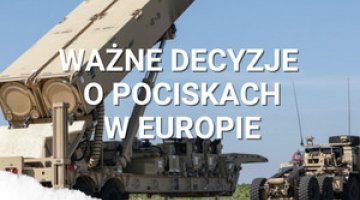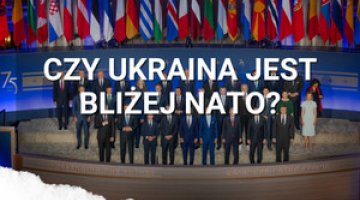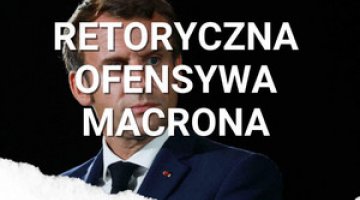France and the United Kingdom: the beginning of bilateral coordination of nuclear deterrence
During French President Emmanuel Macron’s visit to the United Kingdom from 8 to 10 July, the two countries signed new agreements aimed at enhancing their defence cooperation, specifically in the fields of nuclear policy, land force capabilities, and defence industry collaboration.
The joint Northwood Declaration (10 July) states that while the nuclear deterrents of both countries will remain independent, they may be coordinated. To facilitate this, a Nuclear Steering Group will be established, jointly led by the French Presidency and the UK Prime Minister’s Office. This group will oversee cooperation in policy, capabilities, and deterrence operations (such as the deployment of submarine patrols or aligning nuclear readiness decisions). The agreement also affirms that ‘there is no extreme threat to Europe that would not prompt a response by our two nations’.
The Lancaster House 2.0 joint declaration (10 July) sets out, among other points, the transformation of the Combined Joint Expeditionary Force (CJEF), established in 2010, into a Combined Joint Force (CJF) capable of commanding a Franco-British corps rather than just a brigade. In an attempt to respond to new forms of threats, the force is also intended to cover space and cyber domains. An important element of the declaration is its industrial component (Entente industrielle), which envisages the resumption of Storm Shadow/SCALP cruise missile production following a 15-year pause and joint work on their successor as part of the European ELSA project. It also includes efforts to develop new air-to-air missiles, laser and radio frequency weapon systems, and to explore the use of artificial intelligence for conducting precision strikes.
The new agreements concluded by France and the United Kingdom represent a response to the growing threat to Europe’s security posed by Russia, as well as to the risk of a reduced US commitment to European defence. At the same time, the coordination of nuclear deterrence is intended to complement NATO’s planning in this area, in which France does not participate.
Commentary
- The nuclear arsenals of both France and the United Kingdom are currently undergoing modernisation. France (with approximately 290 warheads) and the UK (with approximately 225 warheads) maintain a limited nuclear deterrent capability, primarily demonstrated through the continuous rotational deployment of one nuclear-powered ballistic missile submarine on strategic deterrent patrol. Each country has only four such submarines. Both nations have begun constructing new submarines to replace the current ones starting in the mid-2030s. In addition, France has nuclear-armed air-launched cruise missiles (ASMP) deployed on fighter aircraft. In June, the UK announced its intention to rejoin NATO’s nuclear sharing programme, which includes plans to acquire at least 12 F-35A aircraft capable of carrying US-made B61-12 tactical nuclear bombs, and to once again station these weapons on its territory (see ‘NATO summit in The Hague: Trump’s return and a two-component 5% of GDP on defence’).
- France and the United Kingdom take markedly different approaches to nuclear planning within NATO. Officially, the nuclear forces of both countries are seen as complementary to the United States’ nuclear capabilities and as contributing to the Alliance’s overall security (see ‘NATO’s nuclear deterrence: is it time for change?’). While the United Kingdom declared its nuclear forces for NATO’s defence as early as the 1960s, France has consistently emphasised national sovereignty over its own nuclear arsenal. France is the only NATO member that does not participate in the Nuclear Planning Group (NPG), and its nuclear doctrine stipulates that such weapons may be used for self-defence and in the defence of the nation’s vital interests. Simultaneously, according to the doctrine, the mere existence of France’s nuclear deterrent is meant to contribute to the broader security of Europe and NATO. Paris retains complete independence in the development and operation of all technologies concerning the use of nuclear weapons. In contrast, the United Kingdom, while considered ‘operationally independent’, relies on US-made Trident II ballistic missiles. These missiles are manufactured, stored, and maintained exclusively in the United States.
- The significance of the Northwood Declaration lies in the establishment of a policy for coordinating nuclear deterrence, marking a notable evolution in the approach taken by both countries. In light of the anticipated reduction in the United States’ conventional military presence in Europe, London and Paris intend to signal their shared readiness to assume greater responsibility for the continent’s security, including in the nuclear domain. Until now, Franco-British cooperation in the field of nuclear deterrence had remained limited, primarily based on the Chequers Declaration of 1995, in which both countries recognised their key security interests as inextricably linked. Under the so-called Teutates Treaty signed in 2010, they created a joint research facility for simulating nuclear weapons tests (located in Valduc, France), which addresses security risks not only for the two nations but also for Europe as a whole. At the same time, the phrasing used in the Northwood Declaration deliberately retains a degree of ambiguity regarding the nature of the ‘response by our two nations’.
- The enhanced Franco-British military and industrial cooperation aims, among other things, to provide military support for Ukraine. In terms of military capabilities and industrial collaboration, France and the United Kingdom have been bound by the 2010 Lancaster House treaties. These agreements were primarily focused on streamlining joint efforts to generate savings (in the context of the financial crisis) and on establishing the Combined Joint Expeditionary Force (CJEF) as a joint force capable of conducting expeditionary operations. The Lancaster House 2.0 declaration adapts Franco-British cooperation to the challenges posed by collective defence. The CJF is to take the form of a joint corps-level command that will operate outside the NATO command structure. This formation could serve as a command element for the potential deployment of ground forces on Ukrainian territory as part of a Coalition of the Willing (see ‘Deployment of a European reassurance force in Ukraine: a political or military measure?’) after a ceasefire is achieved. At present, the United Kingdom and France each maintain one corps-level command within NATO’s force structure: the Allied Rapid Reaction Corps (UK) and the Rapid Reaction Corps – France. However, their respective land forces are too small to fully staff these corps with their own divisions, as both countries maintain only two divisions each. The resumption of Storm Shadow/SCALP missile production aims to replenish stockpiles that were depleted by weapon deliveries to Kyiv, and potentially to signal readiness to continue providing support.





